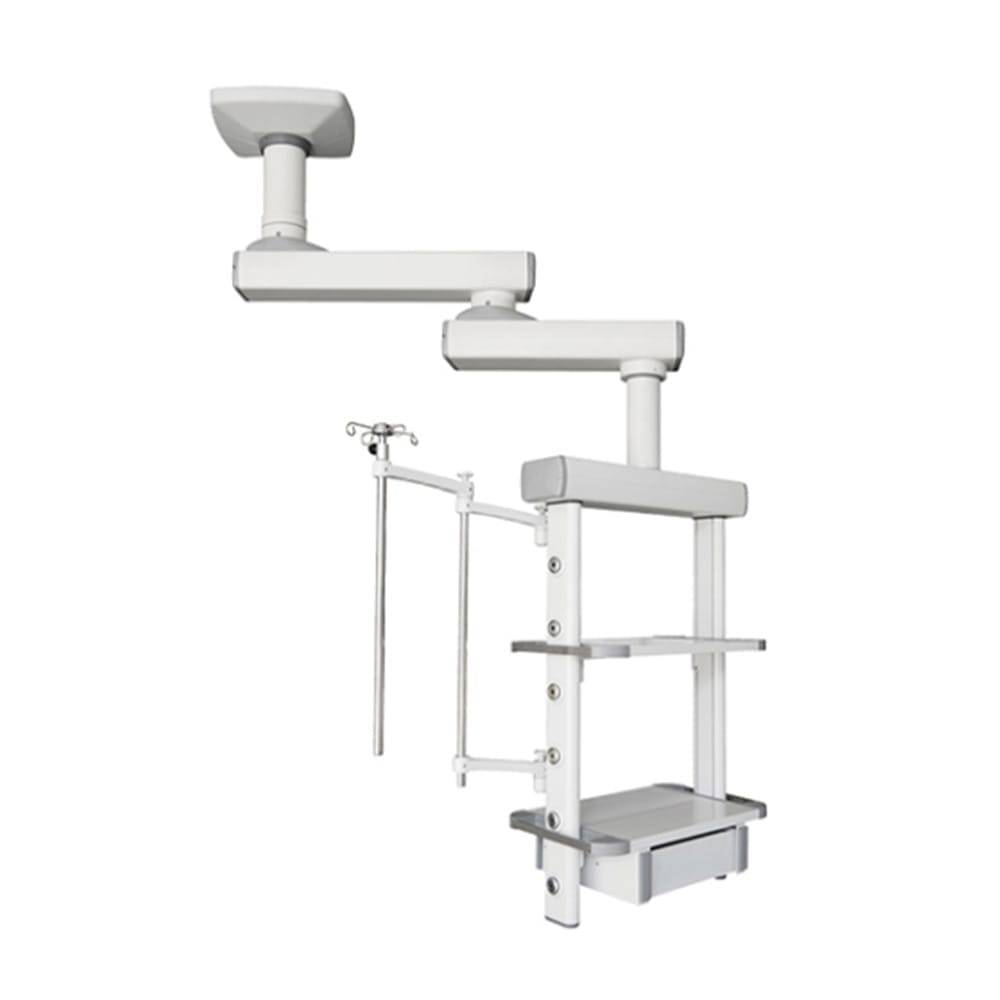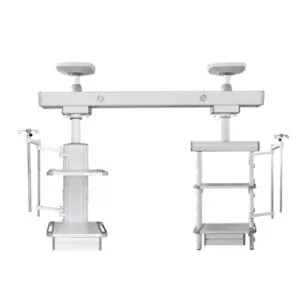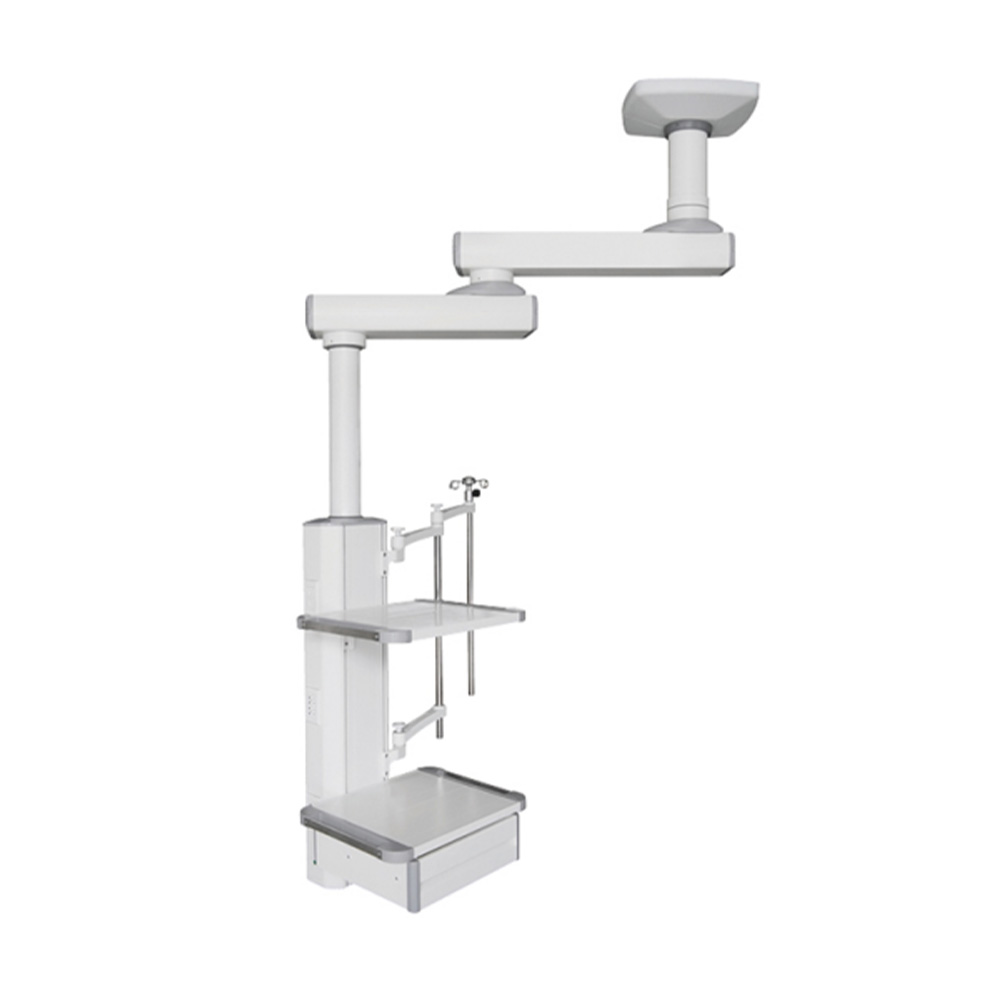Die Anschrift
304 Nordkardinal St.
Dorchester Center, MA 02124
Arbeitsstunden
Montag bis Freitag: 7:00 - 19:00
Wochenende: 10:00 - 17:00
Willkommen auf meinem Blog!
Bevor wir uns in die Inhalte vertiefen, würde ich mich freuen, wenn Sie mir auf meinen Social-Media-Plattformen folgen, wo ich weitere Einblicke gebe, mit der Community interagiere und Updates poste. So können Sie mit mir in Kontakt treten:
Facebook:https://www.facebook.com/profile.php?id=100071234835011
LinkedIn:https://www.linkedin.com/company/74943205/admin/dashboard/
YouTube:www.youtube.com/@shandongexpertmedicalequip4695
TikTok:www.tiktok.com/@expertmedical
Lassen Sie uns nun gemeinsam unsere Reise beginnen. Ich hoffe, Sie finden die Inhalte hier aufschlussreich, spannend und wertvoll.

In modernen Operationssälen sind medizinische Hängesysteme unverzichtbar geworden. Sie ermöglichen einen einfachen Zugang zu Strom- und Gasleitungen sowie wichtigen chirurgischen Geräten und haben die Gestaltung von Operationssälen revolutioniert. Da Krankenhäuser und Operationszentren nach mehr Effizienz, Hygiene und Sicherheit streben, hat die Integration intelligenter, ergonomischer medizinischer Hängesysteme höchste Bedeutung erlangt.
Dieser Artikel befasst sich eingehend mit der Frage, wie medizinische Hängesysteme moderne Operationssäle prägen. Wir behandeln ihre Komponenten, Vorteile, Anwendungen und Überlegungen für Käufer. Zusätzlich finden Sie ausführliche FAQs und eine hilfreiche Tabelle mit praktischen Faktoren. Ob Sie einen neuen Operationssaal einrichten oder einen bestehenden modernisieren – das Verständnis dieser Systeme ist entscheidend für fundierte Entscheidungen.
Medizinische Hängesysteme sind hochentwickelte Geräteträger für Operationssäle, Intensivstationen und Behandlungsräume. Diese Systeme sind mobil und modular konzipiert und werden an der Decke oder Wand montiert. Darin befinden sich verschiedene medizinische Geräte wie Gasanschlüsse, Steckdosen, Datenanschlüsse, Monitorarme, Infusionsständer und Lagerplattformen.
Medizinische Hängesysteme dienen im Kern der Optimierung von Arbeitsabläufen. Traditionell waren Krankenhauszimmer mit Kabeln, Tanks und Geräten überfüllt, die viel Platz beanspruchten und die Mobilität des Personals einschränkten. Hängesysteme beseitigen diese Ineffizienzen, indem sie alles vom Boden abheben und in sorgfältig angeordnete modulare Arme und Serviceköpfe verlagern.
Jeder Anhänger enthält normalerweise:
Ihr Zweck ist nicht nur organisatorischer, sondern auch funktionaler Natur. Hängesysteme verbessern die Sterilität, indem sie die Reinigung von Böden erleichtern, und vereinfachen Notfallmaßnahmen durch den zentralen Zugriff auf Versorgungseinrichtungen und Geräte.

Die heutigen chirurgischen Umgebungen sind anspruchsvoll, schnelllebig und erfordern ein hohes Maß an Koordination. Von robotergestützten Eingriffen bis hin zu minimalinvasiven Techniken sind die eingesetzten Instrumente und Technologien komplexer und vielfältiger geworden. Um diesen Fortschritten gerecht zu werden, benötigen medizinische Einrichtungen eine ebenso moderne wie effiziente Infrastruktur.
Medizinische Hängesysteme gehen direkt auf einige der dringendsten Probleme bei der Gestaltung von Operationssälen ein:
Die chirurgische Versorgung entwickelt sich ständig weiter, und die räumlichen Gegebenheiten müssen angepasst werden. Medizinische Hängesysteme sind eine direkte Antwort auf diese Entwicklung und verbessern die Effizienz, ohne Kompromisse bei Sicherheit und Hygiene einzugehen.
Für Käufer und Planer ist es entscheidend, die verschiedenen Komponenten eines medizinischen Anhängersystems zu verstehen. Jede Komponente trägt individuell zur Verbesserung der Funktionalität und Zuverlässigkeit des Geräts bei. Hier ist ein genauerer Blick auf die Bestandteile dieser Systeme:
Der Armmechanismus, das Herzstück des Tragarmsystems, besteht typischerweise aus leichtem, hochfestem Aluminium. Er ermöglicht multidirektionale Bewegung und Drehung und gewährleistet so eine präzise Positionierung des Systems während des Eingriffs. Die Arme können je nach gewünschter Flexibilität einfach, doppelt oder gelenkig sein.
Der Servicekopf ist die „Steuerzentrale“ des Bedienpults. Er verfügt über Anschlüsse für medizinische Gase wie Sauerstoff, Lachgas, Luft und Vakuum. Außerdem sind Steckdosen, Netzwerkanschlüsse und USB-Anschlüsse vorhanden. Individuelle Konfigurationen sind oft je nach Raumaufteilung und speziellen Anforderungen möglich.
Dies gewährleistet die sichere Abgabe lebenserhaltender Gase direkt an das Operationsfeld. Die Anzahl der Gasanschlüsse kann je nach Einsatzzweck des Systems für Anästhesie, Chirurgie oder Intensivpflege konfiguriert werden.
Stabile Regale ermöglichen den einfachen Zugriff auf Werkzeuge, Medikamente und Monitore. Viele Hängesysteme verfügen über Infusionsständer, Infusionsständer oder sogar Gelenkarme zur Befestigung von Ultraschall- oder Bildgebungsgeräten.
Ein effizientes Kabelmanagement ist für einen aufgeräumten Arbeitsplatz unerlässlich. Integrierte Kanäle und Haken sorgen dafür, dass Strom- und Datenkabel nicht herunterhängen oder Stolperfallen bilden.
Durch die Synergie dieser Komponenten entsteht ein System, das die Benutzerfreundlichkeit, Sicherheit und Leistung in der Intensivpflege verbessert.
Je nach klinischer Umgebung und Verwendungszweck können medizinische Tragarmsysteme in Design und Konfiguration erheblich variieren. Hier sind die wichtigsten Typen:
Diese hängen direkt von der Decke und bieten ein Höchstmaß an Bewegungsfreiheit sowie Platzersparnis. Sie sind in Operationssälen weit verbreitet und tragen alle wichtigen Versorgungseinrichtungen und Zubehörteile.
Diese Systeme werden auf Intensivstationen eingesetzt und ermöglichen einen einfachen Zugang zu wichtigen Geräten, Beatmungsgeräten und Monitoren. Sie verfügen oft über zwei Arme und unterstützen mehrere Konfigurationen.
Diese Systeme sind auf Anästhesisten zugeschnitten und bieten zuverlässigen Zugang zu Gasleitungen, Absauggeräten und Anästhesiegeräten, oft in Reichweite einer Armlänge.
Mit zwei unabhängig voneinander beweglichen Armen eignen sich diese Systeme ideal für komplexe Hybrid-Operationssäle. Sie bieten mehr Flexibilität und eine bessere Lastverteilung für schwerere oder mehrere Geräte.
Diese Systeme wurden speziell für den Einsatz in stark frequentierten Operationssälen entwickelt und legen den Schwerpunkt auf Modularität, ergonomische Positionierung und nahtlose Integration mit Operationsleuchten und Monitoren.
Die Auswahl des richtigen Typs hängt sowohl von den beabsichtigten Verfahren als auch von den physischen Einschränkungen des Raums ab.
| Besonderheit | Beschreibung | Geeignet für |
|---|---|---|
| Armdrehwinkel | Bis zu 330° verstellbar, ermöglicht präzise Positionierung | Alle chirurgischen Umgebungen |
| Belastbarkeit | Belastbar bis 180 kg je nach Ausführung | OP-Säle mit hoher Geräteausstattung |
| Gasauslasskonfiguration | Unterstützt mehrere Gase mit farbcodierten Auslässen | Anästhesie und Operation |
| Strom- und Datenanschlüsse | Kann bis zu 24 Steckdosen und Netzwerkanschlüsse beinhalten | Digitale Operationssäle und Intensivstationen |
| Modularität des Geräteregals | Herausnehmbare, höhenverstellbare Einlegeböden | Intensivstationen für Kinder und Erwachsene |
| Bremssystem | Pneumatische oder elektromagnetische Bremsen für Sicherheit und Stabilität | Hochpräzise chirurgische Aufgaben |
| Antimikrobielle Beschichtung | Oberflächenbehandlung zur Reduzierung des Überlebens von Krankheitserregern | Infektionsempfindliche Zonen |
| Not-Aus-Funktionen | Integrierte Tasten zum schnellen Herunterfahren von Versorgungseinrichtungen | Trauma- und Notaufnahmen |
Mithilfe dieser Tabelle können Sie wichtige Funktionen schnell erkennen und sie Ihren klinischen Anforderungen zuordnen.

Moderne medizinische Tragarmsysteme bieten zahlreiche Vorteile und stellen für Gesundheitseinrichtungen eine attraktive Langzeitinvestition dar:
Das Personal kann die Hängearme mühelos bewegen und die Höhe und den Winkel des Geräts anpassen, um die Belastung zu reduzieren. Dadurch werden lange Eingriffe weniger körperlich anstrengend und effizienter.
Durch das Anheben von Kabeln und Werkzeugen lässt sich der Boden leichter desinfizieren. Hängesysteme sind oft mit antibakteriellen Beschichtungen ausgestattet, die das Infektionsrisiko zusätzlich reduzieren.
Die Pendelarme rasten sicher ein und verfügen über Bremssysteme, um unbeabsichtigte Bewegungen zu verhindern. Weniger Kabel auf dem Boden bedeuten weniger Rutsch- oder Stolpergefahr.
Die Medizintechnik entwickelt sich schnell weiter. Modulare Hängesysteme können mit neuen Gasleitungen, Datenanschlüssen oder Zubehör aufgerüstet werden, ohne dass ein kompletter Austausch erforderlich ist.
Ein ordentlicher, aufgeräumter Operationssaal wirkt professionell und vermittelt Patienten und Personal Vertrauen. Pendelsysteme tragen dazu bei, diesen Eindruck zu erzielen.
Durch die Investition in diese Systeme können sich die Einrichtungen bessere Ergebnisse, geringere Betriebsrisiken und eine sicherere Operationsumgebung sichern.
Bei der Auswahl eines medizinischen Anhängersystems sollten Sie nicht nur die Kosten berücksichtigen. Achten Sie auch auf Benutzerfreundlichkeit, Flexibilität und Konformität. Folgendes sollten Sie bewerten:
Verschiedene Systeme sind für unterschiedliche Aufgaben optimiert. Ein chirurgisches Handgerät ist möglicherweise nicht für die Anforderungen einer Intensivstation oder einer Endoskopie-Abteilung geeignet.
Messen Sie die Raummaße sorgfältig. Die Pendelarme müssen sich frei drehen können, ohne an Wände, Lampen oder andere Geräte zu stoßen.
Erstellen Sie eine Liste aller Geräte, die montiert werden sollen – Monitore, Regale, Ventilatoren – und stellen Sie sicher, dass das System das Gesamtgewicht tragen kann.
Wählen Sie Systeme mit modularem Design, um zukünftige Upgrades zu ermöglichen. Vermeiden Sie Einheitslösungen, die die zukünftige Entwicklung einschränken könnten.
Prüfen Sie, ob das System den ISO-, CE- oder FDA-Standards entspricht. Dies gewährleistet Sicherheit und Kompatibilität mit globalen Best Practices.
Die Auswahl des richtigen Systems erfordert die Zusammenarbeit zwischen Architekten, klinischen Ingenieuren und medizinischem Personal.
Vor der Installation eines medizinischen Anhängersystems müssen mehrere Faktoren berücksichtigt werden:
Bei richtiger Planung wird die Installation zu einem optimierten Prozess, der sofort einen Mehrwert bietet.

Die ordnungsgemäße Wartung verlängert die Lebensdauer und Zuverlässigkeit medizinischer Tragarmsysteme. Beachten Sie die folgenden bewährten Vorgehensweisen:
Durch die Implementierung eines strukturierten Wartungsplans können Krankenhäuser kostspielige Ausfallzeiten vermeiden und die Patientensicherheit gewährleisten.
Medizinische Tragarmsysteme sind nicht nur funktionale Werkzeuge – sie stellen bahnbrechende Lösungen für moderne chirurgische Umgebungen dar. Dank ihrer Fähigkeit, Arbeitsabläufe zu verbessern, die Sicherheit zu erhöhen und das stetig wachsende Spektrum medizinischer Technologien zu unterstützen, sind sie zu unverzichtbaren Hilfsmitteln in Operationssälen und Intensivstationen geworden.
Wenn Sie planen, Ihre Anlage mit modernsten Pendelsystemen zu bauen oder zu renovieren, Kontaktieren Sie uns Kontaktieren Sie uns noch heute für eine individuelle Beratung und ein Angebot. Wir helfen Ihnen, einen sichereren, intelligenteren und effizienteren Operationsraum zu schaffen.
Wie lange medizinische Anhängersysteme dauern normalerweise?
Bei ordnungsgemäßer Verwendung und Wartung halten die meisten Systeme 10–15 Jahre oder länger.
Kann ich die Anhängerkonfiguration anpassen?
Ja, die meisten Anbieter bieten vollständig anpassbare Module für Gas, Strom, Daten und Zubehör an.
Sind sie für alle Krankenhaustypen geeignet?
Ja, von kleinen Kliniken bis hin zu großen Krankenhäusern verbessern Hängesysteme die Effizienz auf ganzer Linie.
